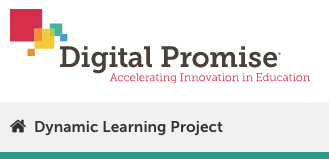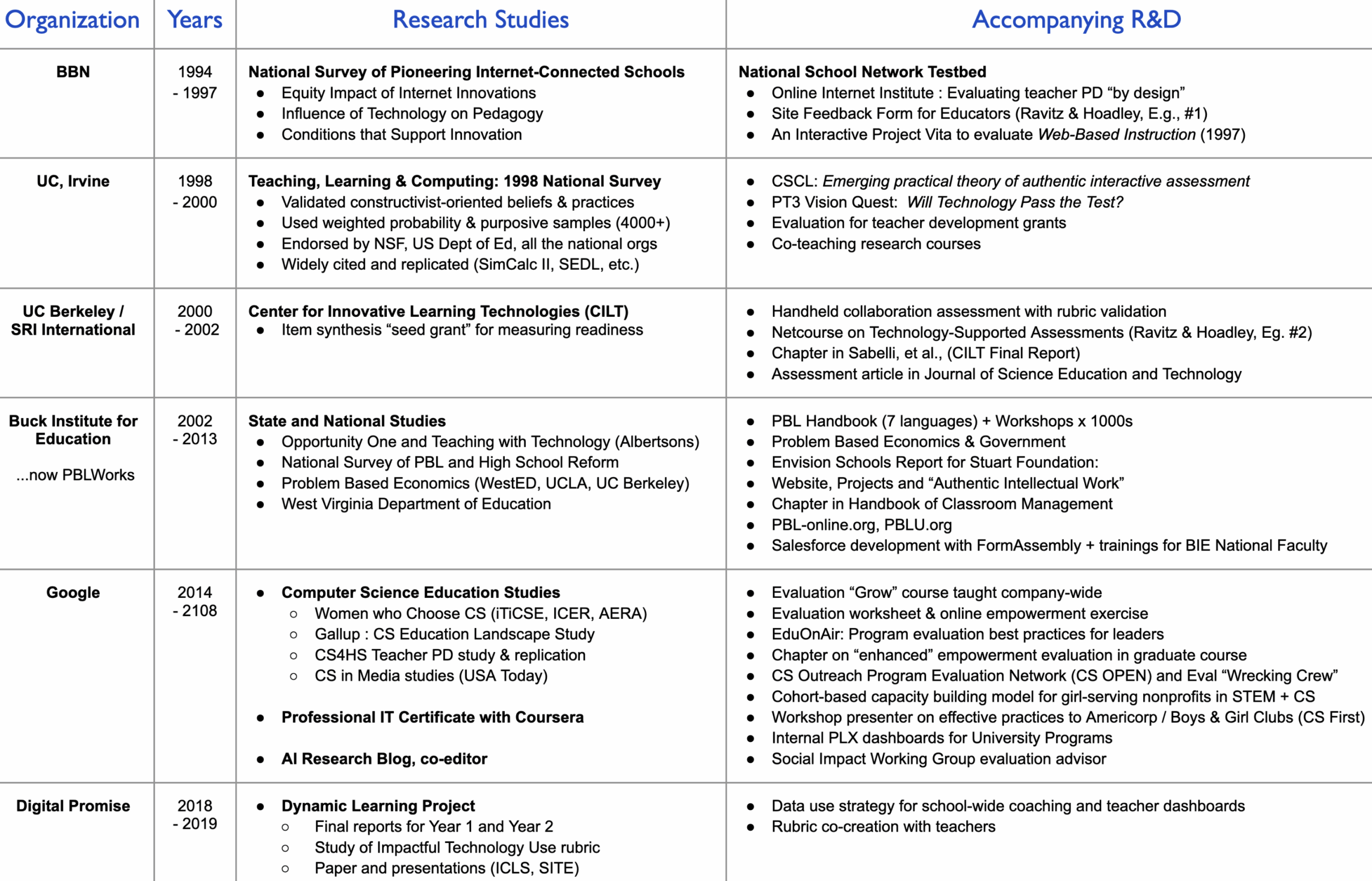Past Projects

Dynamic Learning Project: Increasing Impactful Technology Use
Google and Digital Promise adapted the 21st Century Teaching and Learning Framework to guide the Dynamic Learning Project.
Research products
- SITE 2020 Paper (best paper award)
- Year 2 info graphic and full report
- Blog on sharing measures
- Rubric study (Paper)
- Ravitz, J., Bakhshaei, M., Hardy, A., & Seylar, J. (2020). Assessing Classroom Technology Use for 21st Century Skills: A Research-Based Rubric. International Society for Technology in Education (ISTE), Nov 28- Dec 1, 2020, Anaheim, United States.
- Ravitz, J., Bakhshaei, M., Hardy, A., & Seylar, J. (2020). Assessing Classroom Technology Use for 21st Century Skills: A Research-Based Rubric. International Society for Technology in Education (ISTE), Nov 28- Dec 1, 2020, Anaheim, United States.

Senior Program Manager for Evaluation of Educational Outreach
Defined 4 pillars
- Make evaluation useful
- Promote evaluation across the company
- Inform the field and build capacity
- Make tools accessible
Raised evaluation capacity at Google and beyond
Built a team based on metrics and strategies for evaluation use (as OKRs)
Provided levels of support
- Direct support
- Managing external evaluators
- Influencing and advising
- Self-paced learning and tools
Research Products
- USA Today with Nielsen and USC
- CS4HS article and replication
- Gallup CS Education Landscape
- Women who Choose CS
- Co-editor, Google AI Blog
More: ACM-Digital Library or CV

Project & Problem-Based Learning, PBL
Research Products
- Summary of PBL research (article)
- West Virginia PBL and skills study
- National Survey of PBL in High School Reform
- Beyond changing culture (article)
- New Tech Network (report)
- PBL as Catalyst (paper)
- Role of technology (article)

- WestED – What Works Clearinghouse study of Problem Based Economics
- District experiment analyzing within- and across-teachers in Grand Prairie ISD, TX
- Survey of researchers of PBL in K-12

J.A. and Kathryn Albertson’s Foundation
The Foundation gave 5 computers to all schools in Idaho and ran statewide Teaching with Technology sessions for teachers.
Research Products
- Opportunity One Technology Initiative
- Teaching with Technology


Center for Innovative Learning Technologies
CILT was an NSF-funded center for learning sciences
Research Products
- Ravitz, J. (2004) A doorway to new tools and practices: Supporting teacher education, research and development with an online netcourse. In N. Sabelli and R. Pea. (Eds.). Uniting people, technology and powerful ideas for learning. Six years of knowledge networking in learning sciences and technologies, 94-101. Menlo Park, CA: SRI International.
- Yarnall, L., Penuel, W., Ravitz, J. , Murray, G., and Means, B. (2003). Portable assessment authoring: Using handheld technology to assess collaborative inquiry. Education, Information & Communication, 3(1), 7-55.
- Ravitz, J. (2000) CILT 2000: Using technology to support ongoing formative assessment in the classroom. (2000) Journal of Science Education and Technology, 11(3)

UC Irvine - TLC'98 National Survey
This national survey was funded by the National Science Foundation and US Department of Education (and endorsed by a dozen national associations).
Sampling produced weighted and unweighted data for high intensity teachers and schools, major reform models, and a nationally representative sample (total N = 4000+). Measures were widely replicated, e.g., SimCalc II in Texas and and the Southeast Regional Development Lab (SEDL).
Research Products
- Study Home
- Methods
- Surveys
- Reports (selected)
- Participants Report
- Report #3: Computer Use
- Report #4: Constructivist Beliefs & Practices
- Presentations (selected)
- Constructivist Philosophy & Practices (AERA)
- Reform & Tech (COSN)
- Major Reform Programs

BBN Educational Technologies: National School Network
National survey of Internet Using Schools based on Don Ely’s 8 conditions for innovation
Research Products
- The Influence of Computers and Internet Use (article)
- The Equity Threat of Promising Innovations (article)
- After the Wires (AERA Paper)
- Preliminary findings (AECT paper)
- Dissertation (Conditions that Facilitate Internet Use in Schools with High Internet Connectivity: A National Survey)
Design & Feedback Systems
- Online Internet Institute
- Site Feedback Form (BJET article)
- TechTrends interview
Research & Development (for each role)

